Children need love and care, more so when they are unwell. You will always be there for your little one, but you also need some tools at your disposal to stay a step ahead and get immediate medical aid when needed. So, what do you have in your medicine drawer right now – cotton, gauze, bandages, some OTC medication? What about a thermometer?
Some parents miss this important instrument that comes handy when they need to track their child’s fever. A proactive approach, especially when it comes to your munchkin’s health, can help the doctor make a prompt diagnosis and get started with the treatment without further ado. Although medically, fevers are good and denote that the body is fighting infections, a high fever could cause discomfort. Therefore, buying a thermometer, a good one for that matter, is important.
Many also don’t have thermometers because they don’t really know which one to buy. Here’s a quick guide for you if you are considering buying one.
Types of Thermometers and Things You Should Consider When Buying One
Did you know patients had to hold foot-long thermometers for about 20 minutes to measure their body temperatures before a portable, six-inch version was invented in 1867? The thermometer has since then gone through various modifications to suit the present needs. They come in varied features, and that can make it quite a task for you when buying one. But, fret not; remember these points and getting one will be easier than you thought.
1. Mercury Thermometer
These are the most traditional thermometers, which aren’t much in use lately for the risks they carry. Mercury thermometers are made of glass that can break easily, and mercury in itself is a toxic element. If you need something for home use, you may want to skip the mercury thermometer and move on to the next type.
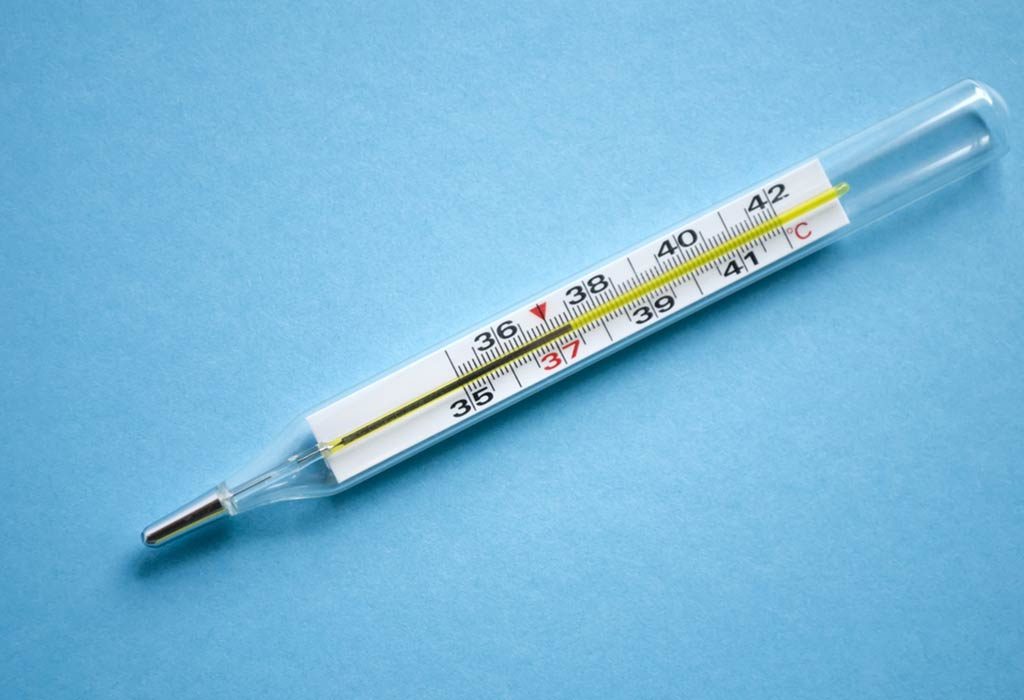
2. Strip Thermometer
Strip thermometers are used to take the body temperature by placing one on the forehead for a few minutes. They are easy to use and are portable, but they don’t really show accurate body temperatures.
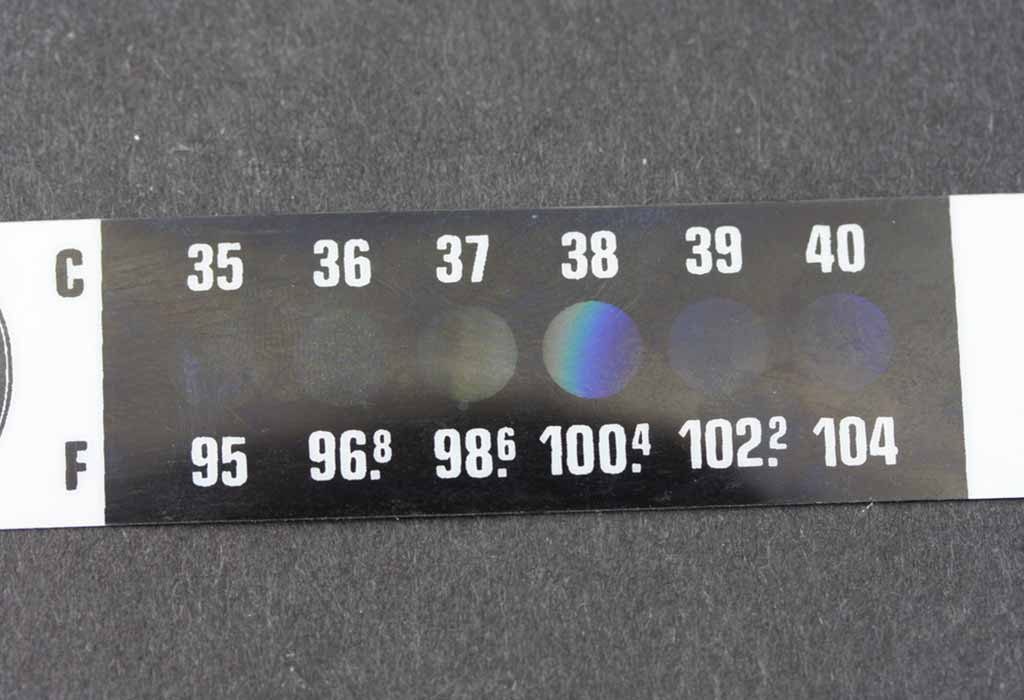
3. Digital Thermometer
Digital thermometers give readings in a matter of minutes. They can be used to record armpit, oral, or rectal temperatures. Armpit temperatures tend to be less accurate, oral temperatures depend on several factors and tend to fluctuate, whereas rectal temperatures are very problematic. If you check your child’s temperature immediately after she consumes something cold or hot, the reading can highly fluctuate. Also, digital thermometers take time to measure temperature, and for small children, they are uncomfortable and simply not useful.
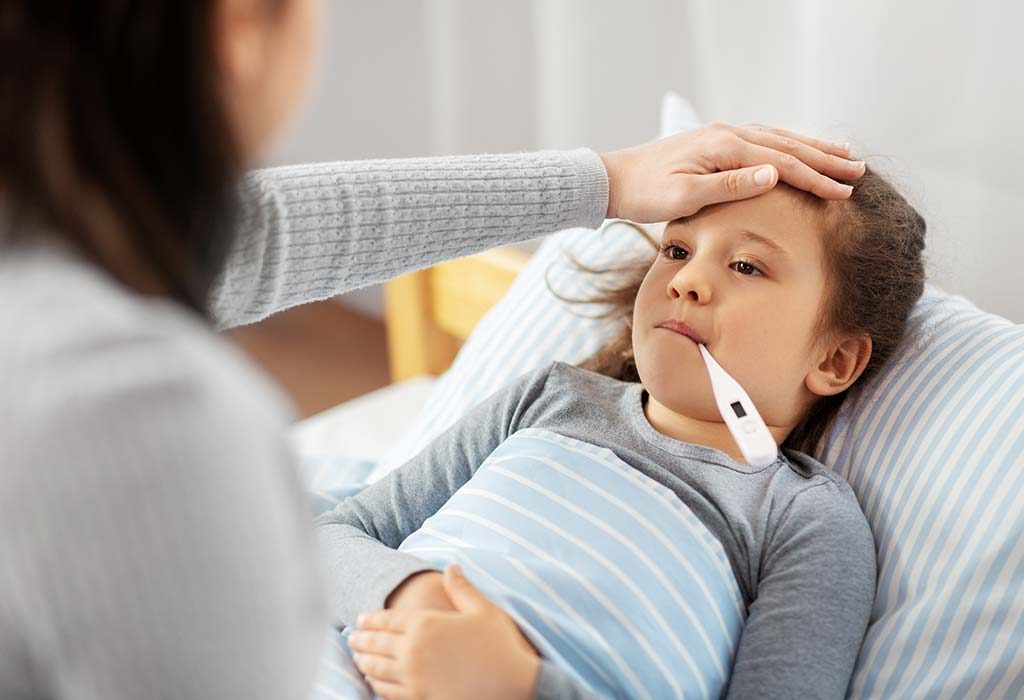
Rectal thermometers are often used for infants and toddlers, whereas for older children, oral digital thermometers are used. When going for these thermometers, you need to ensure they are cleaned, sanitised and kept separately for hygiene reasons. Avoid using the same digital thermometer for more than one child to prevent any disease-causing infections from passing down even if you sanitise it with rubbing alcohol. Also, using a rectal thermometer can add to the discomfort of the sick child, especially if you wake her up to take her temperature. Plus, children are more likely to react to this discomfort when they are unwell.
4. Tympanic or Ear Thermometer
As the name suggests, ear thermometers are used to read the temperature inside the ear canal. They can be used for kids six months and older. When placed properly, they can give nearly accurate readings. You might need some practice though, because the reading generally depends on how well it is positioned inside the ear. Remember that ear wax or the natural curves inside the ear could also affect the accuracy of the readings.
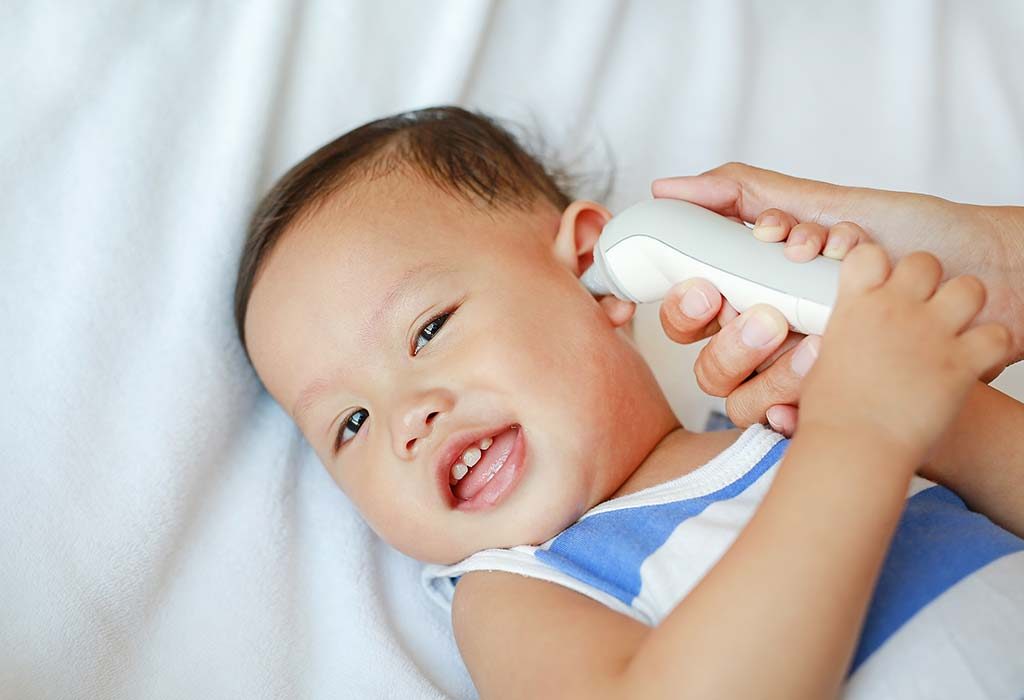
Ear thermometers are designed to cause zero discomfort, but your child might squirm at the thought of something being put in her ear. Many paediatricians do not use the ear thermometer correctly. If you stick the head a bit too far, you can hit the eardrum and hurt the child by damaging it. Using an ear thermometer is also not recommended if your child has an ear infection with a fever. If she isn’t comfortable, it can become quite challenging to track her fever pattern when sick. However, there are alternatives to the ear thermometer.
5. Temporal Artery Thermometer
Temporal artery thermometers are highly recommended for taking accurate readings without causing discomfort. They measure the body temperature using infrared scanners; perfect for parents who have escape artists for kids. They are also called forehead thermometers.
Temporal artery thermometers, such as the Exergen Temporal Artery Thermometer, are best for multiple uses. The Exergen temporal artery thermometer functions on infrared scanners, and measures the temperature of the blood of the temporal artery, which is positioned 2 mm under the skin of the forehead, in three seconds. Therefore, the readings of the core temperatures are extremely accurate and quick.
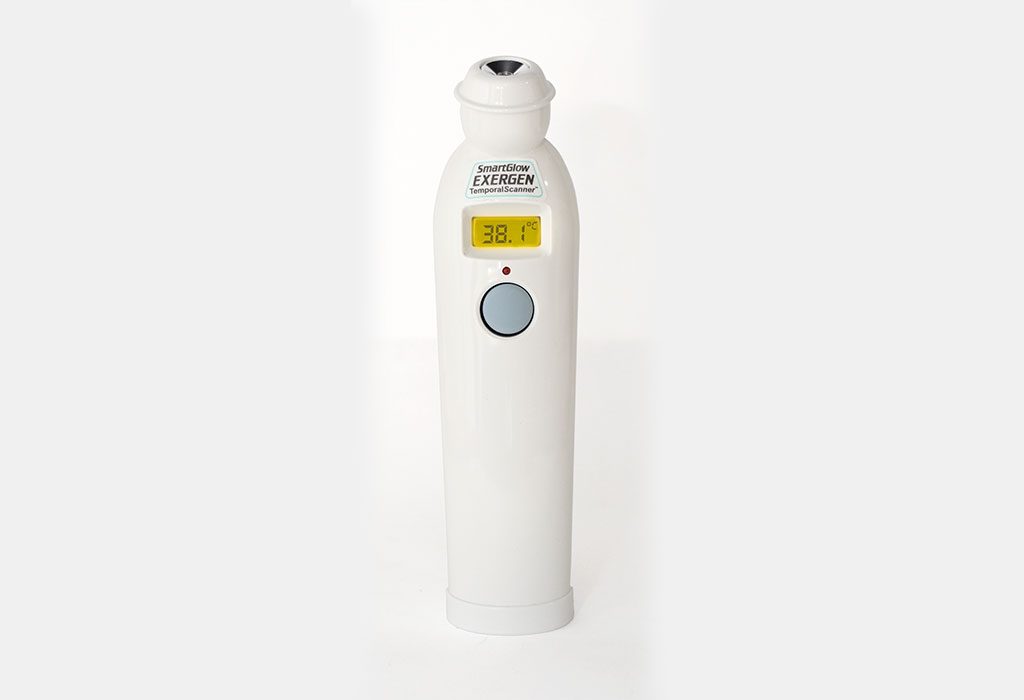
Temporal artery thermometers might seem similar to infrared guns, but they are not. Infrared guns measure the temperature of the skin, which depends on a lot of variable factors that lead to false positives and negatives. Therefore, infrared guns are extremely inaccurate.
On the other hand, temporal artery thermometers show accurate readings in a matter of seconds and are fast, efficient and more reliable than digital thermometers and infrared guns. They are non-invasive and can be used for newborns, infants, toddlers, older children and even adults.
If measuring your tiny tot’s temperature has been quite a task for you, you must consider buying the Exergen Temporal Artery Thermometer. Just switch it on and take the temperature without your child knowing it, either when she’s sleeping or busy playing with her favourite toy.
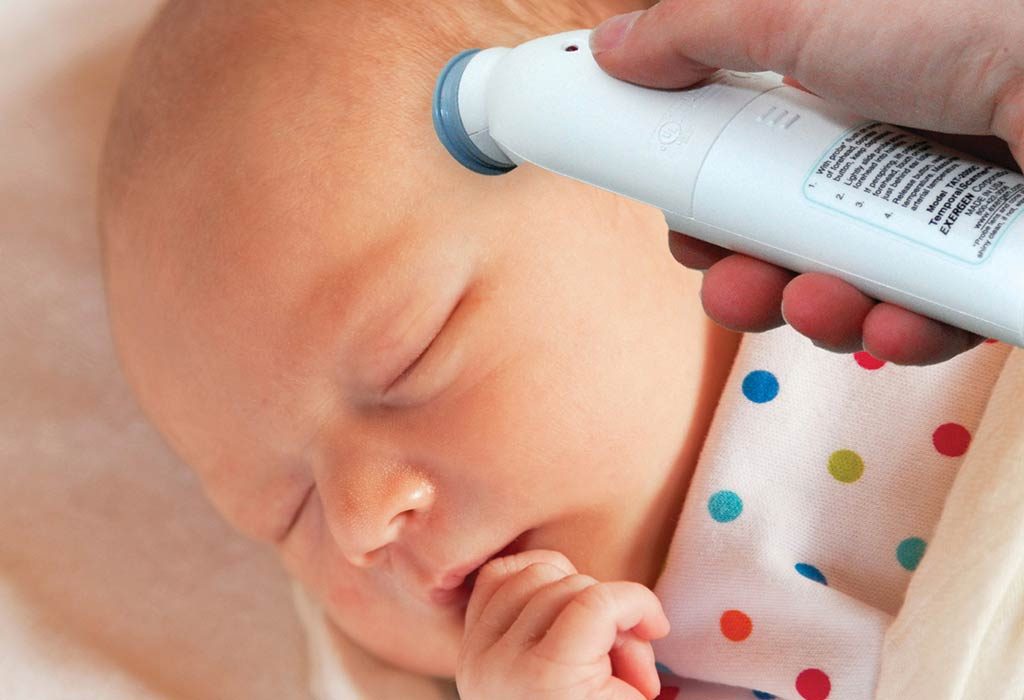
Once you make a decision and purchase a good quality thermometer for home use, you must remember a few things before using it.
Things to Remember When Using a Thermometer for Kids
- When using an oral thermometer, ensure that your child hasn’t consumed any food or fluid at least 20 minutes before. The temperature of the food can affect the reading.
- If your child seems uncomfortable because of the invasive nature of the thermometer you’ve chosen, it is best to go for a non-invasive thermometer, such as the Exergen Temporal Artery Thermometer.
- Always inform the doctor about the type of instrument you used to take the child’s temperature. It will help him/her know how accurate the fever pattern is and recommend appropriate treatment/remedies. If needed, take a little guidance from the doctor to measure your child’s body temperature accurately in the future.
- Maintain a record of other symptoms, such as irritability, indigestion, diarrhoea, vomiting, fatigue, cold, etc. along with the fever and seek medical help immediately for high fevers.
- Measure your child’s temperature a couple of times per day. The fever in the morning is always at the lowest, and it rises heavily in the early evening, around supper time.
A fever might push the panic button when you least expect it. A good quality thermometer that provides accurate readings without causing any discomfort to your child can just be your knight in shining armour when you need one.


